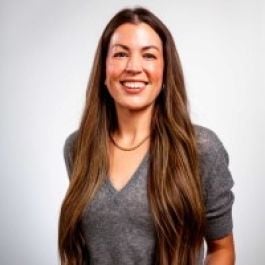Leadership is more of a verb than a noun — just ask VP of Marketing Ashlye Bradford at Parsec Automation.
“Something I endeavor to instill in all my team members is that leadership isn’t defined by title, but by ownership,” Bradford said. “I believe it is important, especially for women, to take visible ownership of projects that stretch their skills.”
Bradford is one of few women in tech at the vice president level. According to McKinsey, only 30 percent of vice presidents in software are women.
Built In spoke with Bradford about the mentorship, stretch opportunities, networking and more that got her where she is today.
Parsec Automation, LLC (Parsec) is a provider of manufacturing operations management software.
Describe your career journey so far. What skills or experiences have you acquired along the way that have helped you get to where you are now?
Working my way from marketing coordinator to vice president of marketing has given me the unique perspective of building a function from the ground up while scaling it through multiple stages of growth. Early on, I developed a foundation in execution — content, campaigns, digital and events — that gave me a strong grasp of the mechanics behind great marketing. As I moved into leadership roles, I learned how to translate that executional experience into strategy — building demand generation programs, repositioning our brand and driving measurable, revenue-aligned outcomes. What has helped me most along the way is adaptability, staying curious, learning quickly and applying structure without losing creativity. Those skills continue to guide me as I lead a modern marketing organization with a focus on impact, efficiency and results.
What support did you receive from individuals or resources that helped you step into a leadership role?
I’ve been fortunate to have mentors and peers who encouraged me to take on challenges that stretched beyond my comfort zone. Executive leaders at Parsec created opportunities for me to partner across sales, product and services, which strengthened my ability to align marketing strategy with broader business goals. That exposure built my confidence and sharpened my ability to think like an operator, not just a marketer. I’ve also leaned heavily on external networks (analyst communities, agency partners and industry peers) to expand my perspective and validate ideas. Most importantly, I’ve had leaders who trusted me to make decisions, even when it meant learning through failure. That combination of trust, mentorship and external insight has been instrumental in helping me grow into my leadership role.
How do you encourage other women on your team to become leaders themselves? Are there any stories you can share that showcase how you’ve done this?
Something I endeavor to instill in all my team members is that leadership isn’t defined by title, but by ownership. I believe it is important, especially for women, to take visible ownership of projects that stretch their skills. For example, I recently asked one of my managers to lead an ad-hoc initiative from our board of directors. It required her to operate with executive presence, coordinate across multiple stakeholders and deliver under pressure. She rose to the challenge and the experience accelerated her credibility within the company. Part of my job as a leader is to make sure those opportunities are not only available, but visible and celebrated.







